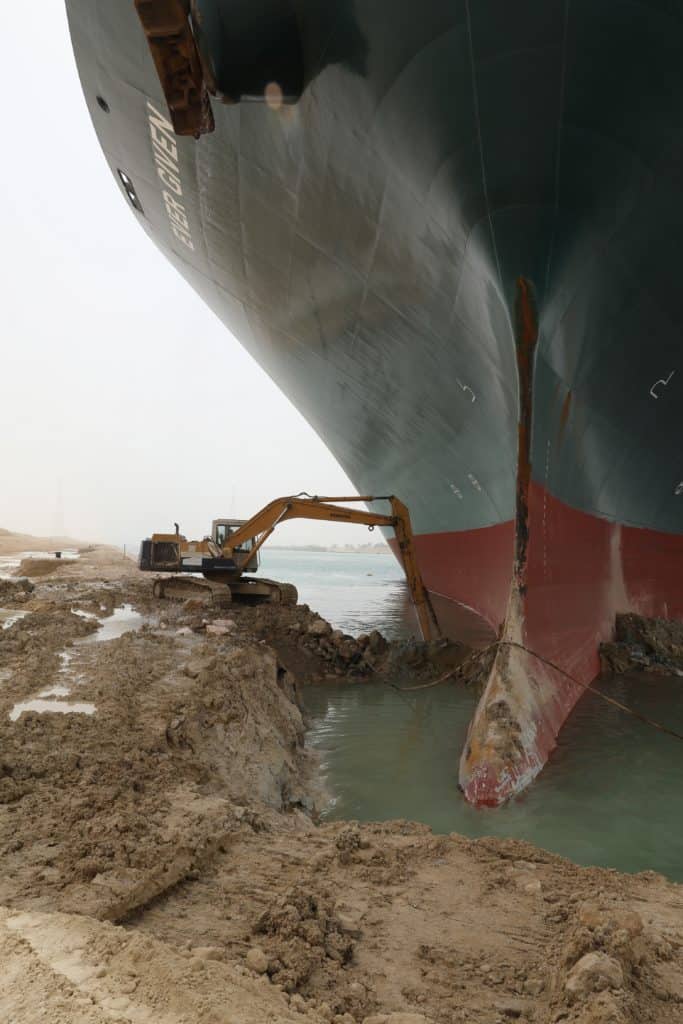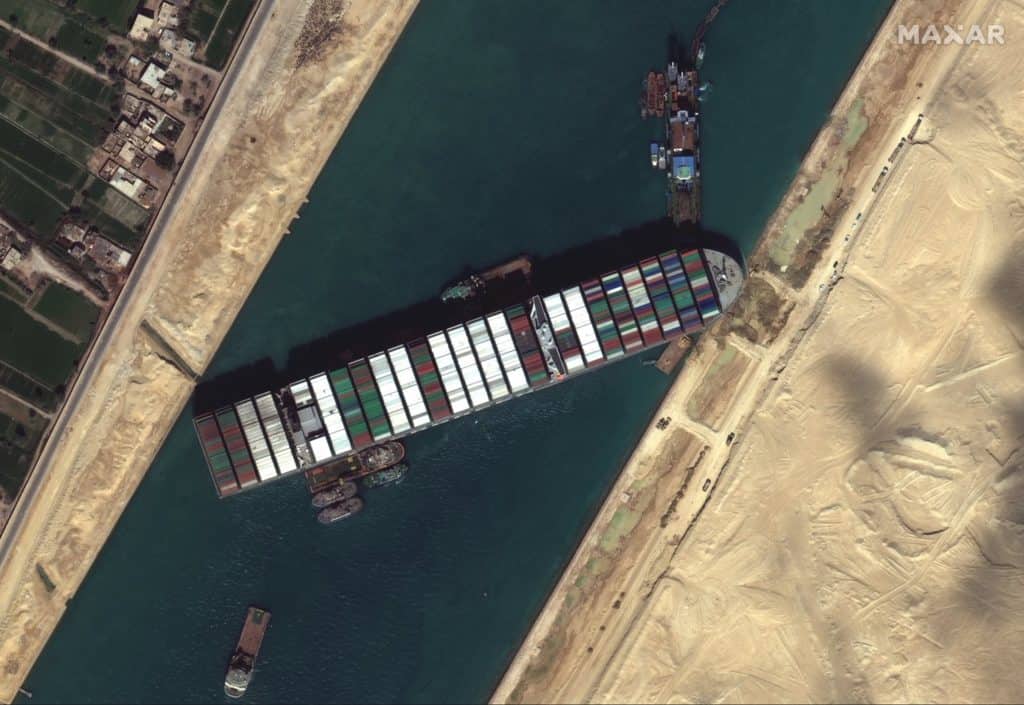Last week’s grounding of a cargo ship across the Suez Canal in Egypt is still impacting commerce all over the world, including at the ports of Baltimore and Virginia—nearly 6,000 miles away.

Photo: Suez Canal Authority
The MV Ever Given ran aground Tuesday, March 23, blocking diagonally a one-lane section of the canal that handles $9 billion in commercial shipping every day. The Ever Given, which flies a Panama flag and is owned by a Japanese company, is 400 meters (roughly a quarter of a mile) long. The Suez Canal at the same point is only 200 meters wide.
Initial attempts to float the ship failed, and at least 12 tugboats were called to the canal to help refloat it. Excavators worked to dig the bow of the ship out of the canal bank, while dredgers dug bottom sediment out from under the ship.
Six days after it ran aground, the Panamanian ship was successfully refloated using “push and tow maneuvers,” according to the Suez Canal Authority. The maneuvers brought the vessel’s stern 102 meters away from the bank of the canal instead of just 4 meters from the bank where it had been. At high tide, the ship was positioned back in the center of the canal to be inspected and then clear way for the hundreds of ships waiting on either end of the canal.
Aerospace company Maxar Technologies released satellite images Saturday of the dredging operations and earth-moving equipment excavating sand near the bow of the ship, as well as a slew of ships stranded on either side.
When the blockage caused a backup of some 300 ships in the canal, some major shippers re-routed vessels from their usual paths. The Port of Virginia says now that things are getting moving again, delays will trickle down to the U.S. East Coast. 10 ships destined for Hampton Roads in mid-April were delayed at the canal and are now waiting their turn.
Port of Virginia spokesman Joe Harris tells Bay Bulletin, “The Port of Virginia’s April cargo volumes will be impacted by the temporary closure of the Suez Canal…The canal has capacity to efficiently clear the backlog of waiting vessels, but those ships will not be able to recover their schedules after this delay, meaning some of April’s cargo (for Virginia) will be late to arrive.”
Harris says those vessels and cargo will likely not make it to Hampton Roads until the end of April or possibly early May.
And it’s the same story at the Port of Baltimore.
In a statement late last week, Maryland Port Administration executive director William P. Doyle said:
“Ships calling on the Port of Baltimore from the Asia and Indian subcontinent use both the Panama and Suez canals. Currently, there are some Baltimore-bound vessels in the Suez Canal.”
It’s not the first extreme circumstance these Bay ports have overcome in the past year. Both Baltimore and Virginia have been making up for lost time with cargo-handling increases after the early-pandemic hit.
As for the week-long Suez Canal crisis, Harris says, “The arrival of these vessels may create some “bunching,” but with our terminal optimization projects complete, we’re built to handle these kinds of challenges.”
–Meg Walburn Viviano




